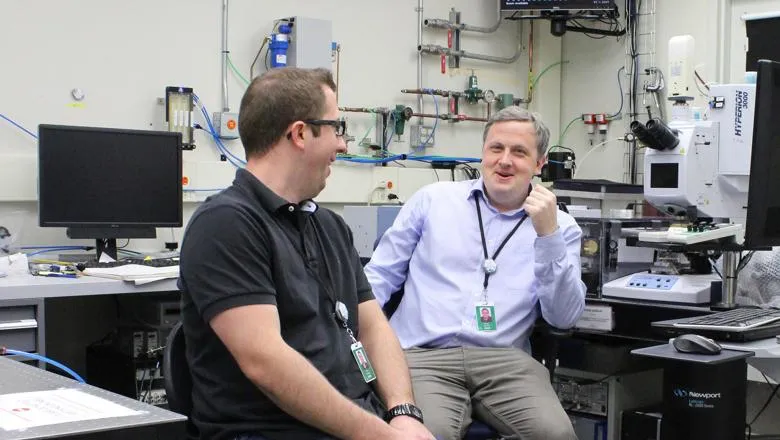We’ve been working for a number of years using synchrotron-based techniques primarily to try and understand the evolving structure of the polymer network of the resin matrix that makes up these materials.
Professor Owen Addison, Chair of Oral Rehabilitation
03 June 2020
Discovery could lead to stronger dental fillings… and less time at the dentist
An international team of researchers have set out to discover how to create stronger dental fillings.

An international team of researchers led by Professor Owen Addison from King’s College London have made an important discovery on how to create stronger dental fillings. This is great news for the estimated 4/5 of those in the United Kingdom who will have to contend with at least one cavity during their adult life.
Using the Canadian Light Source (CLS) at the University of Saskatchewan, the international group of researchers have been able to close a gap in the knowledge of photo-activated resin-based composites, commonly used in medical and dental applications.
In a recent paper published in Nature Communications, the team from the United Kingdom, Canada, Norway and the United States described how they saw inside the resin matrix and gained insight into how filler particles interact with it during setting and influence the dental filling materials.
As the Chair of Oral Rehabilitation of King’s College London’s Faculty of Dentistry, Oral & Craniofacial Sciences and Adjunct Professor of Dentistry at the University of Alberta, Professor Addison has been interested in understanding the structure of these materials in order to improve their performance.
The team used a synchrotron technique that allows them to look at different resin chemistries and filler compositions. This will help researchers optimize the material, make it more resistant to wear and mechanical deterioration and lead to less time spent in the dental office.
The technique, wide field mid-infrared imaging, was used at the Mid-IR beamline at the CLS and allowed the team to gain a greater understanding of what was happening within the matrix of the resin composite, which is used for dental work. The filler particles are introduced to the material for better mechanical performance, but there has been a significant gap in the knowledge about the way these fillers affect the polymerization, or hardening, of the material.
For the first time, the team was able to demonstrate that the fillers themselves modify the local reaction of the setting material. Professor Addison believes that this information has the potential to improve these resin composites, which would not only be an asset to dentistry and other medical applications like orthopedic surgeries, but also industrial applications like windshields for the automotive industry.
